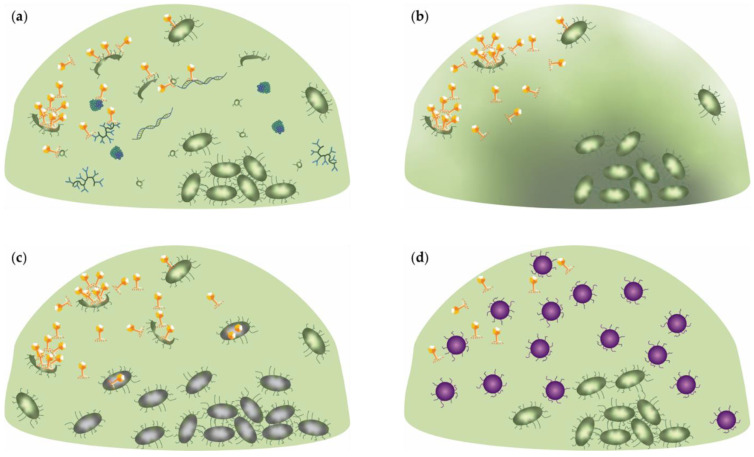Figure 1.
Biofilm defense mechanisms against phage predation: (a) Absorption traps. The biofilm matrix can contain several absorption traps for phages, including dead cells, vesicles andin various macromolecules (in blue) recognized by the phage particles; (b) Diffusion inhibition. Bulk flow is restricted in the biofilm environment due to the presence of the extracellular matrix and high cell densities. Therefore, diffusion becomes the main transport mechanism of solutes in the biofilm environment, which is much slower. Phages can infect the cells that are close to the surface, but reach the dense bacterial clusters that are surrounded by the thick layer of the extracellular matrix (gradient background) much more slowly; (c) Metabolic refuges. Phage replication efficacy depends on the host’s metabolic state. Cells deep within the biofilm and in the bacterial clusters have low metabolic activity (grey colored cells), hence phage replication in these cells is inhibited. Cells that are deep within the biofilm or at the center of the bacterial clusters will not be reached by phage progeny because phage proliferation is inhibited by the metabolically less active neighboring cell; (d) Wall effect. The interior-located non-resistant bacteria (green) are protected from phage predation by phage-resistant bacteria (purple). The phage-resistant bacteria form a protective shield around non-resistant bacteria and hence, phage exposure will not eliminate its host.

